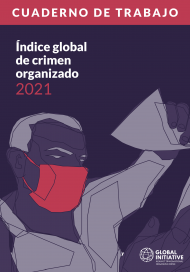Posted on 29 May 2017
On May 15, the body of Javier Valdez Cardenas was perforated by 13 bullets outside the offices of Riodoce, the weekly newspaper he co-founded in Culiacan, Sinaloa, in northwest Mexico. Valdez was one Mexico’s most prominent journalists covering drug trafficking, from the heart of one of the biggest criminal organisations in the world, the Sinaloa Cartel.
Valdez took the stories of hundreds of victims of the so-called war on drugs, and projected their tragedies into poignant prose that won him national and international acclaim. He co-founded Riodoce with a small group of investigative journalists in 2003. The newspaper quickly became a game-changer in the field of Mexican journalism, due to its hard-hitting investigations often exposing the links between corrupt officials and actors of organised crime.
Mexico has become one of the deadliest places for journalists, and organised crime one of the deadliest beats. Six journalists have been murdered in the country only this year. ‘Let them kill us all, if that is the price you pay to report from this hell,’ Valdez wrote from his Twitter account on March 25, when Miroslava Breach, a journalist in the state of Chihuahua was assassinated in front of her son.
He then organised a protest, and marched in Culiacan along with other journalists demanding justice for his dead colleague. Following Valdez’s assassination, other journalists marched in his name in different cities across Mexico. A few electronic publications even blacked out their home pages to demand the Mexican government to take action. President Enrique Pena responded to the public outcry with an announcement to increase the federal budget and strengthen the existing mechanisms to protect journalists.
The government has always publicly promised to do more to protect the lives of media workers, especially following a high profile assassination like Valdez’s. However, all ‘efforts’ so far have proven to be inefficient and insufficient. Since the creation of the special attorney’s office to investigate the crimes against freedom of speech and journalists in 2010, 48 homicide cases have been filed and only three have resulted in a sentence. [1]
In May 2016, in an interview with the Global Initiative, Javier Valdez Cardenas said, ‘My biggest fear is the government, not the narcos.’ He went on to explain that the monopoly of power enforced by the Sinaloa Cartel made the beat safer in Sinaloa than in other states, where rival cartels are constantly fighting for influence and territories. He then labelled the state government as highly intolerant and corrupt.
But in only one year, a lot has changed in Sinaloa. Local and state governments have changed, but so have the drug-trafficking organisations. The incarceration of Joaquin “El Chapo” Guzman, leader of the infamous Sinaloa Cartel led to a violent battle within the Sinaloa criminal organisation. Two factions are contending to replace El Chapo’s leadership. One comprises the children of El Chapo and the other is led by his former right-hand, Damaso Lopez “El Licenciado” (arrested on May 2). Valdez had been writing about the power struggles inside the Sinaloa Cartel before his death. Although the official investigation is underway, there is little doubt that Valdez was killed because of his fierce journalism.
Mexico has reached alarming and unprecedented levels of violence against the press. The problem demands urgent international attention from the relevant bodies at United Nations and the Organization of American States. The government of Mexico must take immediate and determinate actions to thoroughly investigate the assassination of Javier Valdez and all other murdered journalists. Only justice can put an end the vicious circle of impunity that is choking the Mexican press to death.
—
[1] A study by the Justice in Mexico Project [1] found that 110 journalists and media support workers were killed in the country between 2000 and 2014 due to their profession. Studies conducted by Silencio Forzado and Human Rights Watch found that between 2009 and 2013, one in every three attacks were committed by law enforcement agents. [1]
The GI’s recommendations to the Mexican government in 2016:
Drawing on the WOLA-PBI recommendations, as well as those developed by civil society networks to protect investigative journalists, the following are strategies that governments could consider:
- Public and repeated recognition of the role of human rights defenders and journalists as part of a democratic state, the risks they face in their daily work, and the government’s responsibility to protect them;
- States must fully, effectively, and impartially investigate the murder of journalists and clarify the motives and judicially determine any relation they could have with journalistic activity and freedom of expression;
- Supporting through political support and financing the work of independent journalism networks and advocacy organisations in civil society;
- Continuing to improve and strengthen risk analysis practices;
- Publicly reporting on the effectiveness of protection measures.
It’s a dangerous time to be a journalist. So how do we protect them?



